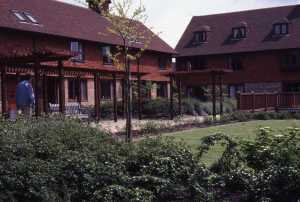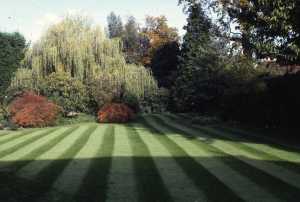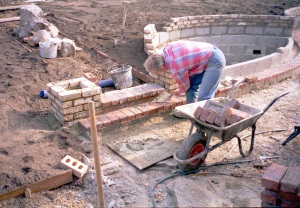So what’s really new today in landscape work?
Looking back over a good few years, it seems to me that only a few things have changed.
Mostly the changes are in office equipment,our office wasn’t particularly fast to adapt to CAD or computerised pricing, ( which as I recall we started in earnest around 1990) we didn’t produce thousands of drawings, although with three full time designers we might have been able to complete our standard detail book quicker.
What we did have, which was invaluable, was a huge collection of standard minute values for thousands of manual site operations, gathered by a group of work study techs who followed us for years.
These values are still useful today, as I’ve found a ‘rate’ for a job is no where near what the job costs with overhead & profits or is worth in every situation.
Oddly, when you take a real look, it seems not too many on- site tools have changed very much over the years, the hammer remains the same,the pick, the saw, the rake, as does the garden fork, the trowel, the cement mixer, the plate compactor – all are virtually the same as they were years ago.
The one exception being perhaps the Dingo or it’s derivative…
This picture is a classic example, this car park in Kent was being resurfaced in 1978, the equipment although not lazer guided isn’t far removed from today’s.
Engines, drive trains, hydraulics, not that many really new tools, and a few altered methods, such as rotary grass cutting, self sealing sand, geotextile fabrics, and the use of plastics have all appeared – Some , I wonder for how long?
Is it time for a revolution in equipment ? if so, I wonder what will appear ? or has the demise of manufacturing reduced us to just accepting products that are derived from abroad ? Do you have a wish or an idea?
I suspect the humble wheel will take some beating over the next generation.
As a Landscape Design & Build professional, I’ve visited literally thousands of homes over the years, talked to the owners, sold them on design & build, managed the project , with a fantastic team who helped us win a large number awards.
As a Landscape Contractor, I’ve read, priced, won & lost , then programmed, then managed thousands of projects designed by other companies or individuals, with the team still winning a large number of awards in the process.
There have always been the same few common traits.
An agreed Design was produced, with an agreed priced Bill of Quantities.
The Designer kept in touch with the project until completion. – you can see him just in this picture below.

The Foreman, was in charge of the site ( our man on the site) stayed on the site with his team,until the project was completed.
We paid particular attention to detail, keeping the sites clean & tidy.
The client made stage payments to an agreed schedule.
We avoided extras, unless they were essential.
We under promised & over supplied. – the weather was almost always the one item we were unable to control.
We sent our aftercare folks in to show the client how to keep his newly paid for project in good order – irrespective of if we had an aftercare contract. ( Finished photographs are great for the portfolio and are easier to take if the site looks great, plus we treated every job as a potential award winner. !)

We were rarely the cheapest price available, we & the client knew this, we did have a professionally staffed office, we employed our own designers, landscape architects, contracts managers, and building staff who were all fully equipped, with all the necessary tools and machines.
We avoided heavy machinery in gardens preferring to use tracked equipment that didn’t compact the ground too heavily, we hardly ever used ‘Bobcat’s’ , but always used min-360 excavators, and tracked carriers.
The mini-tractor being the exception as it was so useful, perhaps with the advent of the dingo that’s not the case anymore ?
When we installed irrigation we preferred to use hydraulic powered horizontal augers which left almost no mess.
This system was really effective, it used an air compressor, but was able to pull the pipe back through the hole just formed, it worked great with Toro 300 series heads for example.
We preferred to work with natural materials ( like bricks, timber, natural paving cut to rectangles) to artificial ( concrete, concrete blocks, plastic, etc.,)
We always kept the conversations semi formal whilst the job progressed, not becoming too familiar was a huge benefit at times. Once the project was finished we relaxed our formal approach.
It wasn’t possible to not have misunderstandings on occasions, however we documented everything, and on the very rare moments when clients became agitated we gently showed what had been agreed and how we could adapt this to their new wishes – we always remembered that this was our job, we were the experts, but it was their project!
We often acted as Designer, Surveyor, Builder and Quality Controller for the Client, who often had scant knowledge of construction issues, so we tended to be much more, should I say tolerant in these situations.
If we were dealing with fellow professionals, then we played hard ball with the best of them !
Ann & I have started a radio show where we interview Clients, Designers, Creators, Maintainers, and the experts that help them, you can listen to a show here or even download for later – Growing Trends
If you would like to be considered for a show, do drop us a line and tell us why, we are now heard or read in 43 countries !
Ann & Chris
Views: 2



















